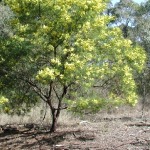
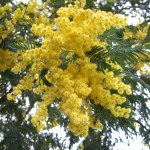
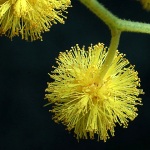
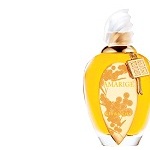

2-hydroxy-
acetophenone
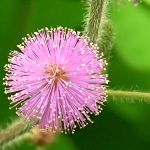
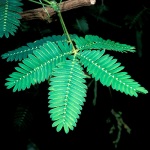
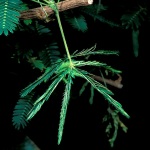
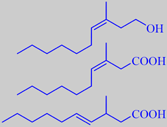
unusual C11-compounds in cassie
Acacia (Mimosa)
Acacia dealbata var. dealbata (Mimosaceae) Wattle
Acacia farnesiana (Mimosaceae) Cassie
Mimosa pudica (Mimosaceae) Sensitive mimosa
The stamens of the composite Mimosacean flowers are usually longer than
the petals so the flowers look like small woollen globules. The yellow
'mimosas' of the florist shops are actually acacias, as true mimosas never
have yellow flowers. An example of a true mimosa is the sensitive mimosa,
Mimosa pudica, famous for closing its leaflets rapidly upon touching
(lower photos).
Many acacias have fragrant flowers. Two species, A. decurrens
var. dealbata (upper photos) and A. farnesiana are utilized
in perfumery.
The flowers of A. farnesiana, or cassie, yields an absolute having
an extremely warm, powdery-spicy and at the same time herbaceous and floral
odor with a deep and very tenacious cinnamic-balsamic undertone - according
to Arctander. It has been reported to contain anisaldehyde, benzoic acid,
benzyl alcohol, butyric acid, coumarin, cresol, cuminaldehyde, decanal,
eicosane, eugenol, farnesol, geraniol, 2-hydroxyacetophenone, methyleugenol,
methyl salicylate, nerolidol, palmitic acid, salicylic acid, and alpha-terpineol
[184]. Demole et al. discovered some unusual odoriferous C-11 compounds
in cassie: (Z)-3-methyl-3-decen-1-ol, (Z)-3-methyl-3-decenoic acid and
(E)-3-methyl-4-decenoic acid [185].
A new trend in luxury perfumes is 'vintage editions' based on exceptional
harvests. A supreme bloom of mimosas (acacias) in southern France in the
spring of 2005 was made into an absolute of outstanding quality, used
in Amarige - Grasse mimosa 2005 harvest (Givenchy).
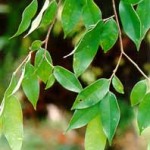
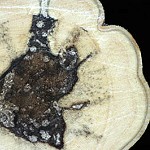
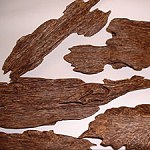

karanones in Agarwood

Aquilaria agallocha, A. malaccensis (Thymelaeaceae) Eaglewood, Aloe, Oud
The genus Aquilaria is found in the triangle enclosed by Bengal, Hong Kong and New Guinea, and consists of about 15 species of trees and bushes. Trees of A. agallocha, A. malaccensis and related species sometimes become infected with a mould, Phialophora parasitica, and react by producing an aromatic resin. The dark resinous heartwood from these forest trees is called agarwood, eaglewood, aloe or oud. It has an elegant, sweet-woody odour of varying character, and is one of the oldest and most famous incense materials of the Far East. The finest quality is called Kanankoh (Kyara in Japanese).
The Chinese marketed and imported agarwood thousand of years before the Europeans came to know about it. The 'aloe' of the New Testament (Joh. 19:39) might have been agarwood. In Japan, a ceremony called Kodo lets the participants experience the scent from small, heated pieces of agarwood, each with a different character and an accompanying anecdote.
Recently there has been a growing demand for agarwood. The wild trees are very rare, having been severely over harvested, but the oil is now making a comeback due to the foresight of a few families in Assam who are planting large plantations of the tree. Several other national initiatives are in progress to make this precious resource available through cultivation. Samples of agarwood oil extracted by supercritical CO2 from the oleoresin of cultivated trees are available from Eden Botanicals. It is one of the most expensive of all essential oils.
The odour-determining chemical constituents of agarwood are a multitude of oxygenated sesquiterpenes. The two shown karanones seem to be important for the 'Oriental' and fumigating character of agarwood [1].
A comprehensive bibliography on agarwood can be found at Cropwatch.
The perfume M7 (Yves Saint Laurent 2002) is declared to include agarwood oil.
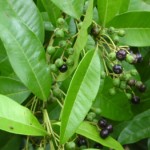
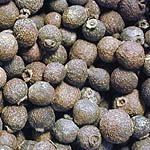


eugenol and 1,8-cineole

caryophyllene
Allspice
Pimenta dioica (Myrtaceae)
Soon after the discovery of America, Spanish explorers noted that the
Mexican Indians used the berries from a certain bush in their warm cocoa
drinks to enhance its flavour. They had to do with the fruits of a member
of the Myrtle family, now known as allspice, a spice "with a flavour
resembling clove, pepper as well as cinnamon", as the encyclopaedia
says. The mature, unripe berries are dried and used, mostly ground, in
sausages, pickles and Christmas cookies. Jamaica is one of the major exporters.
Allspice oil, or pimento berry oil, is obtained by steam distillation.
Its main constituents are eugenol (up to 75 %), 1,8-cineole (eucalyptol)
and the sesquiterpene caryophyllene [6]. See the relatives bay
and clove.


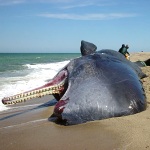

cetyl palmitate
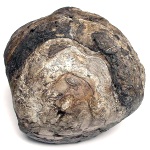

ambrein, g-dihydroionone, g-coronal, ambrox, dehydroambra oxide, and ambrinol
Ambra (Ambergris)
Physeter macrocephalus (P. catodon) (Physeteridae) Sperm
Whale, Cachalot
The legendary ambra (Fr. ambergris, grey amber) is a pathological
metabolite of the sperm whale, probably arising from injuries in its intestines
as a result of certain food intakes. It is abundant in steroid lipids
and has a lower density than water. The odorless triterpene alcohol ambrein
is one of its main constituents. When the excreted chunks of ambra (lower
left photo) are exposed to sunlight and air at the surface of the sea,
a number of oxidation products with a pronounced odor are gradually formed,
see diagram.
Ultimately the ambra washes ashore along the ocean coasts. Since antiquity
it has been highly valued as a sensualizing fixative in perfumery. It
is used as a 3 % tincture (in 90 % ethanol) which has matured by standing
over a period of time with occasional shaking. However, nowadays it is
a rare item on the perfumer's shelf.
One of the most important ambra odorants is ambrox. Today it is synthesized,
e.g. from the diterpene sclareol, found in the plant Clary
Sage or from the diterpene abienol, found in the oleoresin of Balsam
fir. According to Müller and Lamparsky [5], the powerful and
elegant odor of ambrox matches the first four tonalities of aged ambergris
tincture: 1. wet mossy forest soil, 2. strong tobacco, 3. balsamic sandalwood,
4. warm animal musk (the last two are: 5. seaweed/ocean, 6. faecal). Ambrox
of high quality is marketed as Cetalox ® by Firmenich and as Ambrofix
® by Givaudan. Samples may be purchased from Perfumers
World. An example of a perfume utilizing ambrox is Drakkar Noir (Guy
Laroche 1982) [43].
Etymology: Lat. cetus, whale.
P.S.
For a long time biologists have discussed the purpose of the sperm whale's
grotesquely large nose, which is filled with a liquid wax called spermaceti
(because of a superfluous similarity to sperm) and measures one third
of the body's length. Biologists from University of Aarhus in Denmark
developed a new kind of acoustic sensors to be used in deep-sea measurements
along the coast of northern Norway. The results from five year's study
established definitely, in 2002, that the nose of the sperm whale is a
gigantic sound generator, used by the animal as an advanced sonar for
locating prey in dives of more than 1000 m's depth. The sound-generating
nose weighing close to 10 tonnes creates an extremely narrow beam of sound
with the strongest sound pulses in the animal world - in intensity comparable
to those measurable half a metre in front of a powerful riffle [182] [183].
The spermaceti-filled cavities in the nose function as a wave guide, see
diagram. Spermaceti consists principally of liquified cetyl palmitate
(or n-hexadecyl hexadecanoate). In its pure state, cetyl palmitate forms
white, waxy crystals with a melting point of 54°C.
Several odorants have been developed with an ambra-like odor. A few examples are shown below. However, although effective in their own way, none of them compete with ambrox in naturalness and beauty.
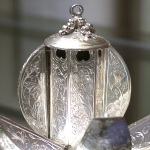
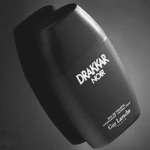

Cedramber ®, Spirambrene ® and Okoumal ®
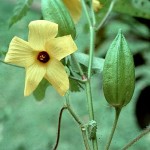
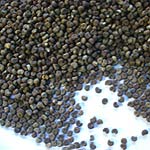
-tetradecen-14-olide.gif)
5(Z)-tetradecen-14-olide

ambrettolide
Ambrette seeds
Abelmoschus moschatus (Malvaceae)
Ambrette seeds come from a tropical hibiscus. The seeds contain an oil
with a fatty-musky, slightly ambery odour. It's most important odoriferous
components are the macrocyclic musks 5(Z)-tetradecen-14-olide and
7(Z)-hexadecen-16-olide, also called ambrettolide [6]. The oil was formerly
highly appreciated in perfumery, but has now been largely replaced by
synthetic musks. For example, the isomer 9-hexadecen-16-olide is made
by the Swiss company Givaudan.
Musk odorants in plants are always macrocyclic lactones (see also angelica).
In animals, using musks as pheromones, they may be ketones as well as
lactones, see musk
deer, musk
rat, and civet.